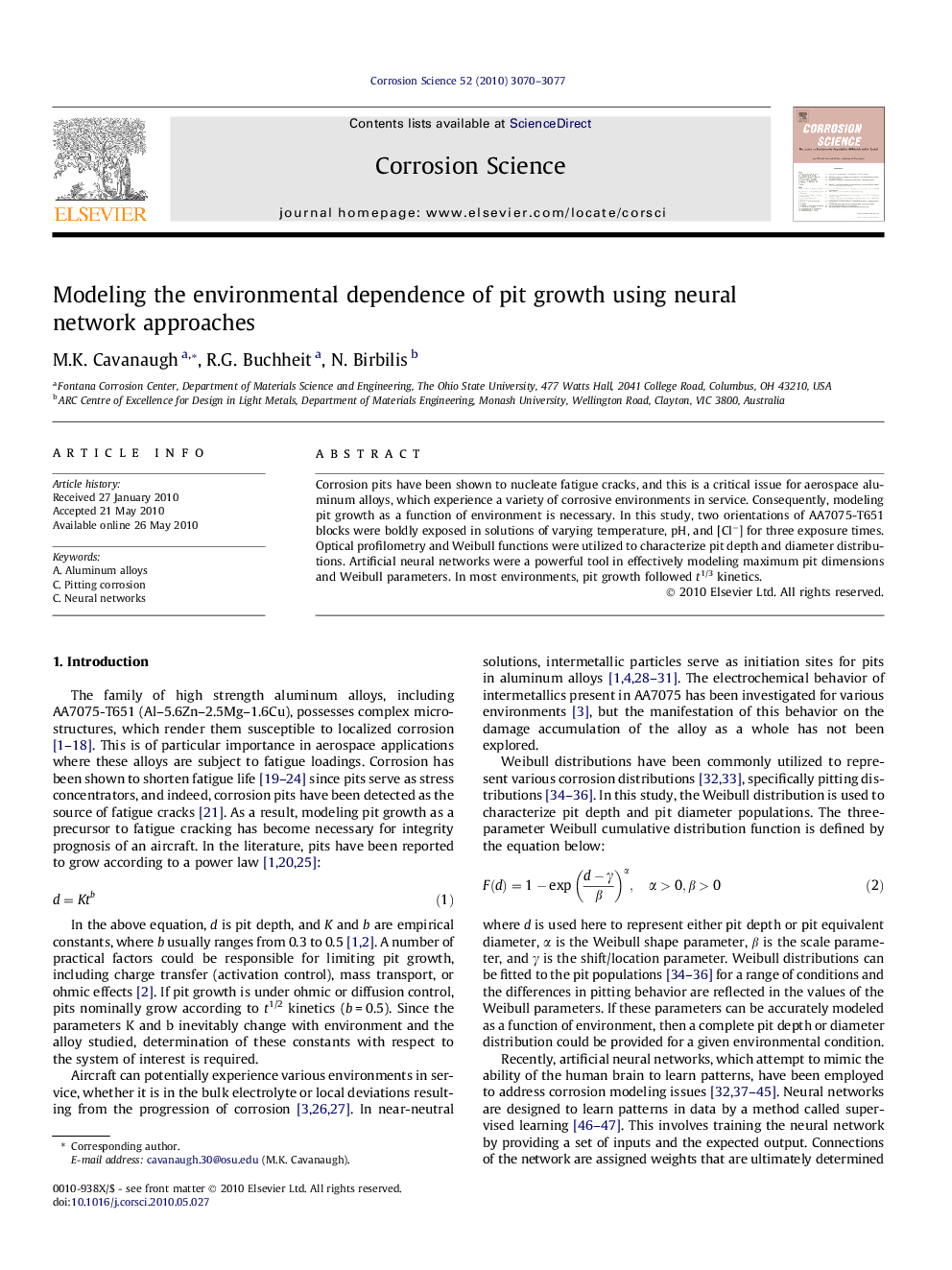| Article ID | Journal | Published Year | Pages | File Type |
|---|---|---|---|---|
| 1470654 | Corrosion Science | 2010 | 8 Pages |
Abstract
Corrosion pits have been shown to nucleate fatigue cracks, and this is a critical issue for aerospace aluminum alloys, which experience a variety of corrosive environments in service. Consequently, modeling pit growth as a function of environment is necessary. In this study, two orientations of AA7075-T651 blocks were boldly exposed in solutions of varying temperature, pH, and [Cl−] for three exposure times. Optical profilometry and Weibull functions were utilized to characterize pit depth and diameter distributions. Artificial neural networks were a powerful tool in effectively modeling maximum pit dimensions and Weibull parameters. In most environments, pit growth followed t1/3 kinetics.
Related Topics
Physical Sciences and Engineering
Materials Science
Ceramics and Composites
Authors
M.K. Cavanaugh, R.G. Buchheit, N. Birbilis,
